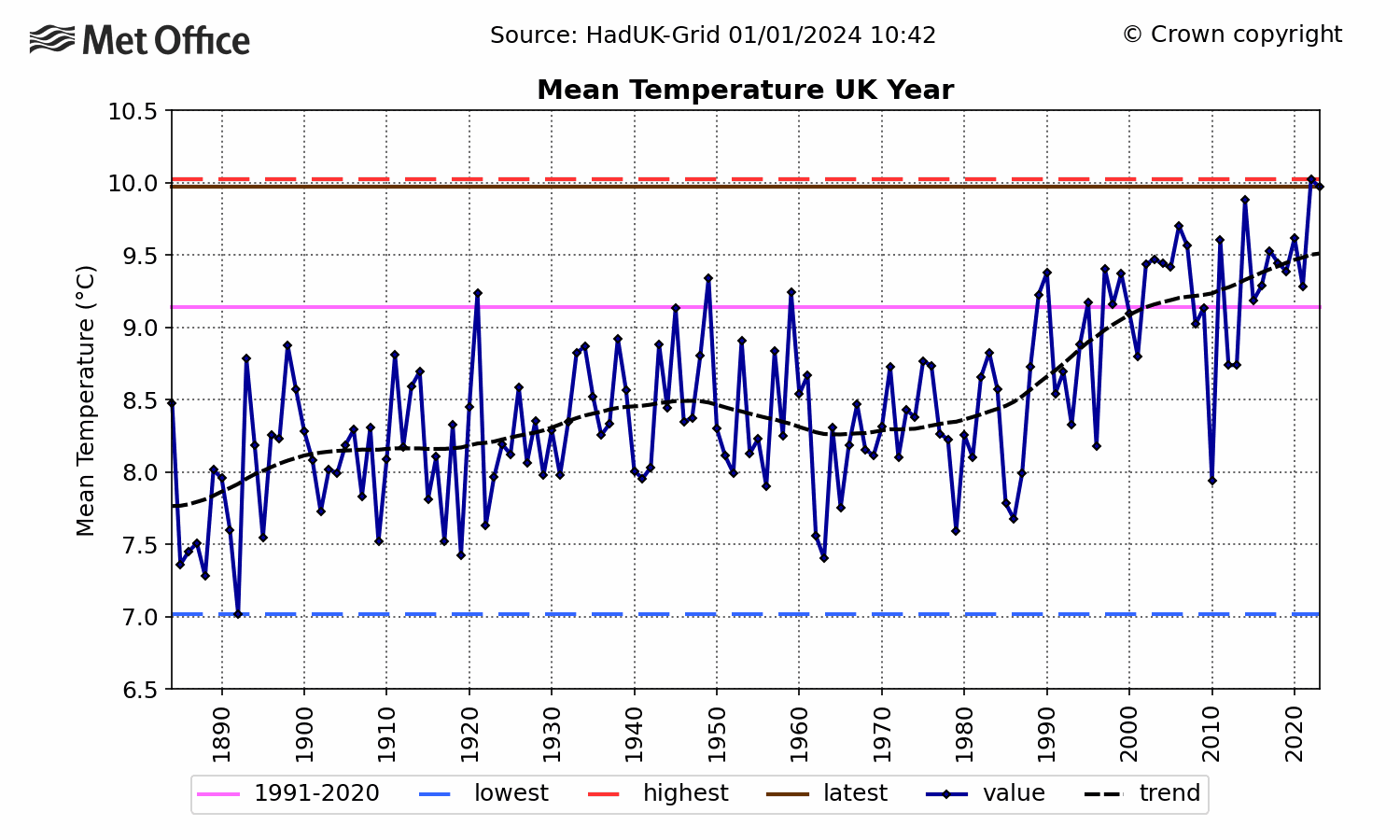By Paul Homewood

UK annual temperatures have dropped for the second year running, though the Met Office will emphasise what they claim is a remorseless upwards trend. However they don’t show error margins in their graphs, and as we know, nine out of ten of the weather stations used for their UK temperature dataset are junk or near junk sites, where poor siting can mean temperatures may be overstated by as much as five degrees for Class 5 and two degrees for Class 4:

.
Given such poor siting, it is not credible that the Met Office can measure UK temperatures to a hundredth of a degree, as they ridiculously claim. If we allow for just one degree of uncertainty, temperatures in recent years are statistically indistinguishable from 20thC ones:
https://www.metoffice.gov.uk/pub/data/weather/uk/climate/datasets/Tmean/date/UK.txt
.
We don’t know of course how good the Met Office network was years ago, as they cannot tell us. But this makes calculating long term trends even more problematic.
We must also bear in mind that the Met Office make no allowance for UHI, which has artificially increased temperatures at many stations since the 19thC. If we look at daily maximum temperatures, which are less affected by UHI, rather than means, we some interesting results:
https://www.metoffice.gov.uk/pub/data/weather/uk/climate/datasets/Tmax/date/UK.txt
The general increase in average temperatures is still evident. But when we highlight only the years over 13C, we see that there were other years as warm as last year, even as far back as 1921, which was just 0.06C cooler. 1949 and 1959 were at similar levels too.
Of course, warm years now appear to be more common, but this is WEATHER not CLIMATE. As is often the case, it is the relative absence of exceptionally cold years which has pushed the average up in the last couple of decades.
Even 2022, which was 0.7C hotter than 1921, is within the 1C margin of error.
Why we now predominantly get warm years now is a matter for debate! British weather is, of course, highly variable, changing drastically from week to week, and year to year. And it all depends on where the airflow is coming from, air pressure and other meteorological factors.
It is this mixture of weather ultimately which determines whether we have a warm or a cold year.


